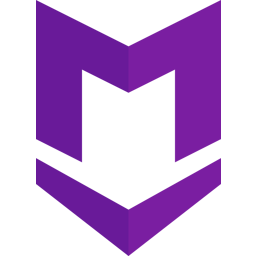How to Create Engaging Technical Documentation with Markdown
 Fanny Nyayic
Fanny Nyayic
In technical writing, clarity, consistency, and user engagement are paramount. Markdown, a lightweight markup language, has emerged as a favorite tool for creating technical documentation due to its simplicity and versatility. Whether you are a seasoned developer or a beginner in technical writing, learning how to leverage Markdown effectively can enhance your documentation and make it more engaging for your readers.
Why Choose Markdown?
Markdown is favored for technical documentation for several reasons:
Simplicity: With its straightforward syntax, Markdown allows writers to focus on content rather than formatting. It's easy to learn and use, making it accessible for all skill levels.
Readability: Markdown documents are readable in plain text, which is especially useful for code reviews and version control.
Flexibility: It integrates seamlessly with many platforms and tools, such as GitHub, Jekyll, and static site generators.
1. Structure Your Documentation
Use Headers to Create a Clear Hierarchy
Headers help organize your document and make it easy to navigate. Markdown supports six levels of headers, from # for the main title to ###### for the smallest subheading. Use headers to break your content into manageable sections:
# Main Title
## Section Title
### Subsection Title
#### Sub-subsection Title
Table of Contents
A table of contents (TOC) provides a quick overview of the document's structure, allowing readers to jump to sections of interest. While Markdown itself doesn’t support automatic TOC generation, tools like Jekyll, GitHub Pages, and various Markdown editors can generate one for you.
## Table of Contents
- [Introduction](#introduction)
- [Getting Started](#getting-started)
- [Advanced Topics](#advanced-topics)
2. Use Lists for Clarity
Bullet Points for Lists
Bullet points are ideal for lists that don’t require a specific order. Use *, -, or + to create bullet points:
- Item 1
- Item 2
- Item 3
Numbered Lists for Steps
When order matters, use numbered lists:
1. Step one
2. Step two
3. Step three
3. Enhance Readability with Formatting
Bold and Italics
Use bold and italics to emphasize important points. In Markdown, *text* or _text_ will italicize the text, and **text** or __text__ will bold it.
This is *italicized* text and this is **bold** text.
Code Blocks and Inline Code
For technical documentation, showcasing code is crucial. Use backticks for inline code and triple backticks for code blocks:
Here’s an example of `inline code`.
This is a code block:
{
"key": "value"
}
## 4. Include Links and Images
### Links
Hyperlinks are essential for referencing additional resources. In Markdown, create links using `[text](URL)` syntax:
```markdown
For more information, visit [GitHub](https://github.com).
Images
Images can help illustrate concepts and provide visual interest. Use the  syntax to add images:

5. Utilize Tables for Data
Tables are useful for presenting structured data. In Markdown, create tables using pipes | and hyphens -:
| Syntax | Description |
| ----------- | ----------- |
| Header | Title |
| Paragraph | Text |
6. Add Interactive Elements
Task Lists
Task lists are interactive and visually engaging. Use - [ ] for an unchecked box and - [x] for a checked box:
- [x] Completed task
- [ ] Incomplete task
Footnotes
Footnotes can provide additional information without cluttering the main text. Markdown syntax for footnotes varies depending on the tool, but a common format is:
Here is a footnote reference[^1].
[^1]: This is the footnote content.
7. Keep It Consistent
Consistency is key in technical documentation. Maintain a uniform style for headers, lists, and code blocks throughout your document. Use a Markdown linter or a style guide to enforce consistency.
Conclusion
Markdown is a powerful tool for creating engaging and readable technical documentation. By structuring your content with headers, lists, and tables, emphasizing key points with formatting, and including interactive elements, you can make your documentation informative and enjoyable to read.
Embrace Markdown’s simplicity and flexibility to enhance your technical writing and deliver exceptional documentation to your audience.
Subscribe to my newsletter
Read articles from Fanny Nyayic directly inside your inbox. Subscribe to the newsletter, and don't miss out.
Written by

Fanny Nyayic
Fanny Nyayic
a passionate web developer, tech writer, open-source contributor & a life long learner.